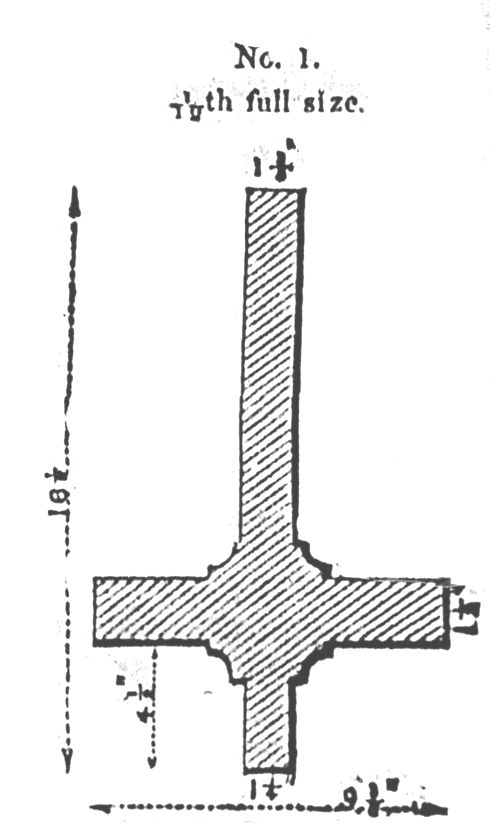Wootton bridge collapse on:
[Wikipedia]
[Google]
[Amazon]
The Wootton bridge collapse occurred on 11 June 1861, when the rail bridge over the road between


Full report
from the Railway Archive
{{Railway accidents in the United Kingdom, 1815–1899, state=collapsed Railway accidents and incidents in Warwickshire Railway accidents in 1861 Bridge disasters in the United Kingdom Bridge disasters caused by maintenance error Accidents and incidents involving London and North Western Railway 19th century in Warwickshire June 1861 events 1861 disasters in the United Kingdom
Leek Wootton
Leek Wootton is a village and former civil parish, now in the parish of Leek Wootton and Guy's Cliffe, in the Warwick district, in the county of Warwickshire, England, approximately 2 miles south of Kenilworth and 2.5 miles north of Warwick. It ...
and Hill Wootton in Warwickshire
Warwickshire (; abbreviated Warks) is a county in the West Midlands region of England. The county town is Warwick, and the largest town is Nuneaton. The county is famous for being the birthplace of William Shakespeare at Stratford-upon-Av ...
collapsed under the weight of a passing goods train on the line between Leamington Spa and Kenilworth
Kenilworth ( ) is a market town and civil parish in the Warwick District in Warwickshire, England, south-west of Coventry, north of Warwick and north-west of London. It lies on Finham Brook, a tributary of the River Sowe, which joins the ...
owned by the London and North Western Railway Company. The train had passed over the bridge safely in the morning with a full load of coal, and was returning to Kenilworth with the empty wagons at 7 am. The 30 ton locomotive fell through the deck of the bridge onto the road below, and the tender crashed into the cab, killing both driver and fireman instantly. Many of the empty wagons behind were dragged into the gap to form a pile almost up to the height of nearby telegraph poles.
Investigation


Henry Whatley Tyler
Sir Henry Whatley Tyler (7 March 1827 – 30 January 1908) was a pioneering British engineer and politician, who contributed to the Great Exhibition of 1851 and whose collections helped found the Science Museum in South Kensington. His interests ...
of the Railway Inspectorate
Established in 1840, His Majesty's Railway Inspectorate (HMRI) is the organisation responsible for overseeing safety on Britain's railways and tramways. It was previously a separate non-departmental public body, but from 1990 to April 2006 it ...
examined the accident on behalf of the Board of Trade. He reported that the five cast iron
Cast iron is a class of iron– carbon alloys with a carbon content more than 2%. Its usefulness derives from its relatively low melting temperature. The alloy constituents affect its color when fractured: white cast iron has carbide impur ...
girders which supported the base of the wooden bridge had all fractured near their centres, and so caused the accident. One in particular had been mended some years before, and he thought that the failure had started here. Angle iron had been fitted along the girder to support a crack in the flange, and had been bolted onto the cast iron. Far from strengthening the girder it had actually weakened it further. In hindsight, it is likely that cracks in the girders had grown to a critical size during the initial passage of the heavy train, which then gave way when the empty train returned.
Similar accidents
It is memorable for coming after the Dee bridge disaster of 1847, when another cast iron bridge had failed. Cast iron should not have been used in this safety-critical application, and the design seems very strange, using cast iron where timber baulks would have sufficed. The bridge had been built in 1844, well before the Dee accident, and patched with the angle iron in 1853. The discovery of the cracked girder should have alerted engineers to the problem, and all should have been replaced entirely. Cast iron failures remained a problem for many years, culminating in the fall of theTay Rail Bridge
The Tay Bridge ( gd, Drochaid-rèile na Tatha) carries the railway across the Firth of Tay in Scotland between Dundee and the suburb of Wormit in Fife. Its span is . It is the second bridge to occupy the site.
Plans for a bridge over the Tay t ...
in December, 1879 with over 75 casualties in the passenger express passing over the viaduct at the time the cast iron columns collapsed. The problem did not end there, however, because so much cast iron had been used on the rail network. A cast iron under-bridge failed suddenly under a train during the Inverythan crash in 1882, killing 5 passengers on the train. The event which really focused minds occurred in 1891, when another girder failed under the Brighton express. Although no-one was killed, the furore caused by the Norwood Junction rail accident led to a survey of all under-bridges. Several thousand were eventually found, and ultimately strengthened or replaced.
References
*External links
Full report
from the Railway Archive
{{Railway accidents in the United Kingdom, 1815–1899, state=collapsed Railway accidents and incidents in Warwickshire Railway accidents in 1861 Bridge disasters in the United Kingdom Bridge disasters caused by maintenance error Accidents and incidents involving London and North Western Railway 19th century in Warwickshire June 1861 events 1861 disasters in the United Kingdom